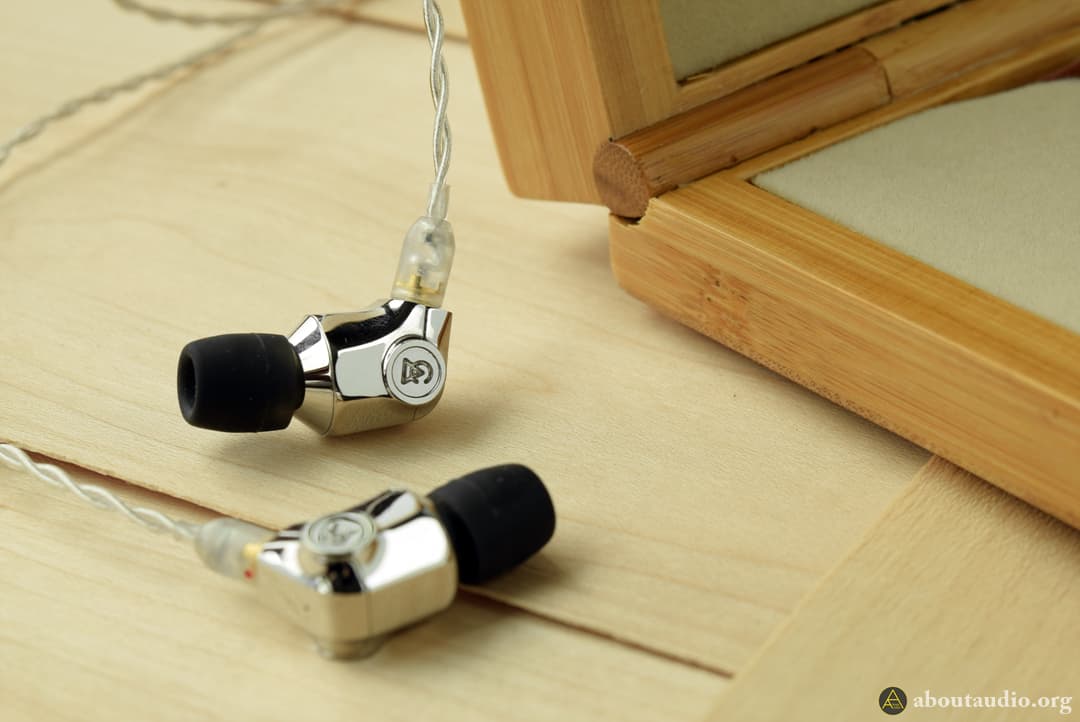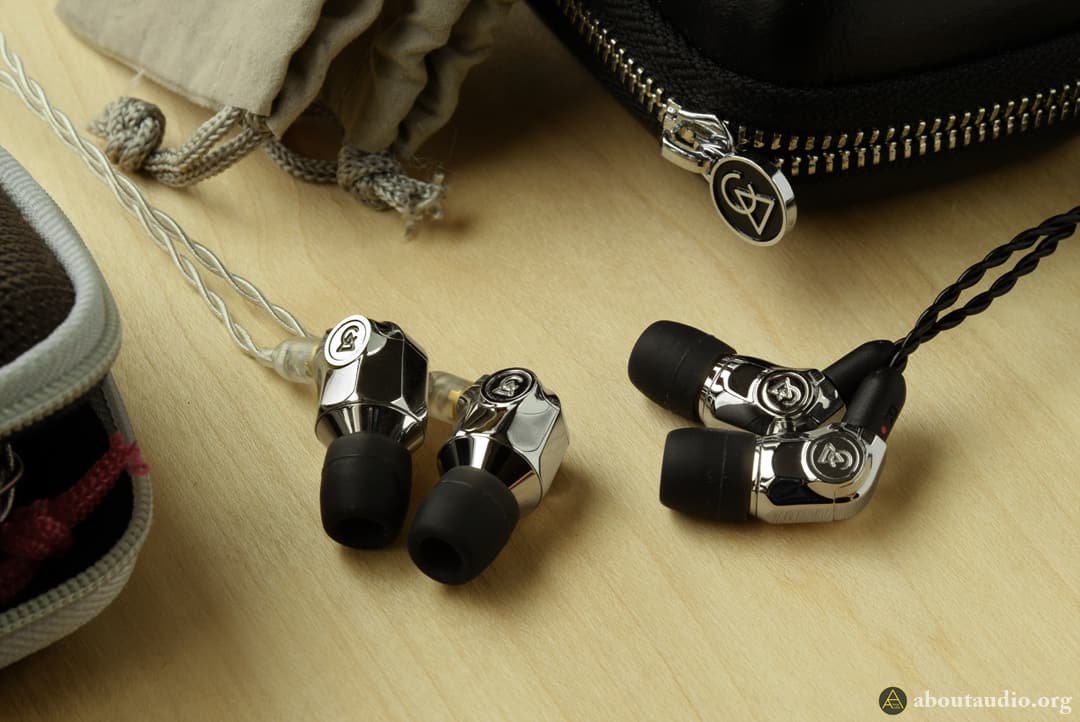
Campfire Audio Atlas: Dynamic juggernaut
When I think about Campfire Audio (short in CA), the first thing that pops up in the mind is the CNC machined, metal earpieces with an angular design. This used to be the only design scheme CA used to have, however they recently started to change things up by releasing two new faces – the Comet and the Atlas. Comet is the cheapest 1BA model ever made by CA while Atlas is the new successor for Vega, the prior flagship single dynamic driver IEM.
Packaging
Atlas comes with the ordinary CA style packaging and packed with a decent amount of accessories – a black leather case, 3 pairs of silicone tips, 3 pairs of foam tips, 4 pairs of Spinfit tips, a cleaning tool, cable ties, 1 pair of velvet pouches, a shirt pin, and some paper works. It seems like CA recently started to include mesh pouches instead of velvets. The mesh pouches far more useful and easy to deal with, so I think I’ll get some spare ones for my Atlas and some other IEMs. It’s good to see them upgrading their accessories every now and again.

Earpieces
Earpieces are made of stainless steel, CNC machined and hand polished. The surface of the housing is vulnerable to scratches, however the material itself is very well built and durable. The outer shape and design are quite similar to Comet, though Atlas is thicker and larger in dimensions.
Being an upgraded model from Vega, Atlas houses a 10mm A.D.L.C (Amorphous Diamond-Like Carbon) dynamic driver which is larger than Vega’s 8.5mm driver. A.D.L.C is Campfire’s custom diaphragm created with a hybrid of non-crystalline diamond and graphite carbon. The results are low density and high rigidity which are the key factors for achieving low-distortion, clarity, and wider frequency response.

New design form
Atlas is one of the first IEM from Campfire that could be worn with the cable straight-down which should be good news to those who disgust over-ear designs. I actually prefer over-ear and hate straight-down designs, so I’m sticking with over-ear since these fit comfortable either way.
The earpieces are mildly weighty but not excessive. I’d say it’s the right amount of weight to give a sturdy and premium feeling to it. There’s a small vent on the back and the nozzles are also made of stainless steel with an approximate diameter of T500.

Cable
The included cable is made of pure silver and has an MMCX termination without the earguides, making it ideal for wearing the earphones straight-down. It’s soft, light, and doesn’t cause any microphonics. Plus, the MMCX sockets are designed to be as small as possible which gives a seamless fit and appearance when attached to the earpieces.

Sound impression – Bass
Atlas aims for a vibrant W shaped sound with an extra emphasis on the lower frequencies. Bass is definitely something that stands out a lot from this IEM. The imaging on the bass is massive but very well controlled. The sub bass quantity is slightly lesser than Empire Ears Legend X or Rhapsodio Zombie. It keeps its identity as a basshead IEM but suitable for more users.
There are lots of basshead IEMs available, but what truly differentiates Atlas from others would be its extremely clear bass resolution. Atlas does a perfect job presenting the ultra lows without bloating it, which adds so much depth yet doesn’t get overwhelming. Reverbs are highlighted but in a way that they’re always tightly controlled. It knows when to decay fast or slow, plus never crossing the line where the sound would turn muddy.

Sound impression – Mids
Mids are placed close to the ears and don’t fall back or get veiled, despite the plentiful bass. The thickness is just around being neutral, gradually decreasing throughout the frequency as the sound flows from lower mids to higher mids. This makes Atlas suitable for both male and female vocals. Lows are definitely thicker with great quantity but vocals are energetic and always stay prominent.
It has sparkly bits on the upper mids which adds some shininess to the sound, but not excessive to the point it would cause sibilance. Vocals from Atlas goes for a crunchy texture and helps the sound to be exciting and refreshing, though may also cause the sound to feel harsh if the source is recorded in low resolution or already has a harsh texture highlighted from the first place. Temperature is also neutral, properly featuring both warmth and chill.

Sound impression – Highs, etc.
Much of the characteristics from mids also applies to highs. It’s positioned slightly behind from the mids and smaller in quantity but just as prominent. Also, the highs are thinner than the low and mids, but still has a good amount of body and energy to it. The thinner body actually serves better when it comes to revealing the small splashes of treble details and that’s the case here. Trebles also go for the crunchy texture but polished and don’t seem to go harsh at all.
Staging is impressively large for its size, forming a nice round shaped headroom. It stretches out well in both depth and width. No need to mention if it’s good in separation – Atlas always manages to keep everything sorted out correctly.

Eartip/Cable matching
Campfire Atlas shows quite a pretty clear difference in sound depending on what eartips and cables you use. For eartips, I’ve found these to sound the best with E-Pro graphene eartips, Acoustune AET07, and JVC Spiral Dots. Wide bore eartips provide a better open-field experience with shinier upper frequencies, though the sound may get too try if paired with eartips with much wider bores like Rhapsodio’s Windwhirl eartips.
While the eartips were easy to choose, the cable is the part where things may get a little tricky. I’ve found brighter sounding cables to work well with these, though Atlas hasn’t worked the best with the ones that are made of more than one materials – leaving me to choose between copper or pure silver. Of course, there are still pros and cons between these two materials. Copper cables achieve the best tonality but could make an already bass-heavy IEM sound overwhelming with increased bass, while pure silver cables achieve better shine and airiness but may result the highs to sound a tad bright.

Matching with cables…
And don’t get me wrong, stock cables already show great combo with these IEM and don’t particularly lack in performance either. Though finding a better performing cable to match well with Atlas would surely bring bigger satisfaction.
You can’t really say for sure if particular cables would sound great with Atlas, so I’d say it’s a bit of a gamble. If you’re looking to get a custom cable for these, it would be better to try out most cable options available to you and see what kind of cables work out the best. I found myself to prefer PW Audio Limited cable the best and I think I’ll stick with this combo. I’ll probably do a review for this cable later sometime, but in the meantime, I could certainly recommend this cable if you’re looking for a cable upgrade.

Verdicts
Atlas is a basshead IEM that doesn’t sacrifice either clarity or upper frequencies. It has a more mature, revealing nature compared to that Vega and should be great enough to satisfy even non-basshead users as Atlas keeps the resolution crisp throughout the frequency range – from deep lows to deep highs, creating a strong W-shaped sound signature with elevated bass. It seems like Campfire started to change gears from their ordinary design concept and I’m curious how they’d pursue even further with their A.D.L.C dynamic driver IEMs.
RELATED REVIEWS
Thanks to Campfire Audio for providing Atlas for the review.
I am not affiliated with Campfire Audio and none of my words were modded or asked to be changed.



